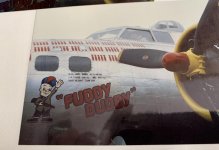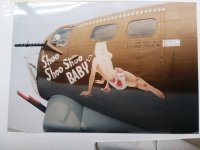B-17 Bomber Paint Vs No Paint, Unexpected Results
Vid Description: The intent of this video is to review WWII B-17’s paint system and the advantages and disadvantages of paint vs. bare exterior surfaces.
[ame]https://www.youtube.com/watch?v=420fO_-u0nE[/ame]
Vid Description: The intent of this video is to review WWII B-17’s paint system and the advantages and disadvantages of paint vs. bare exterior surfaces.
[ame]https://www.youtube.com/watch?v=420fO_-u0nE[/ame]



